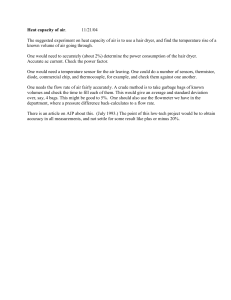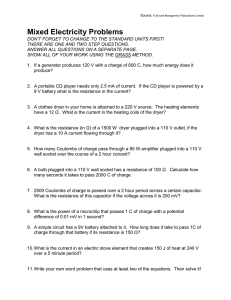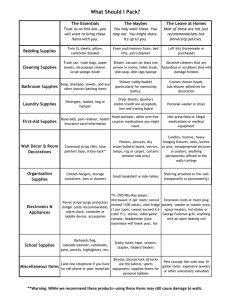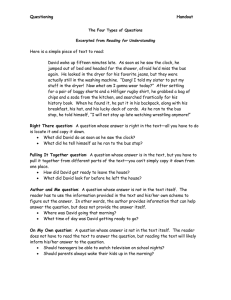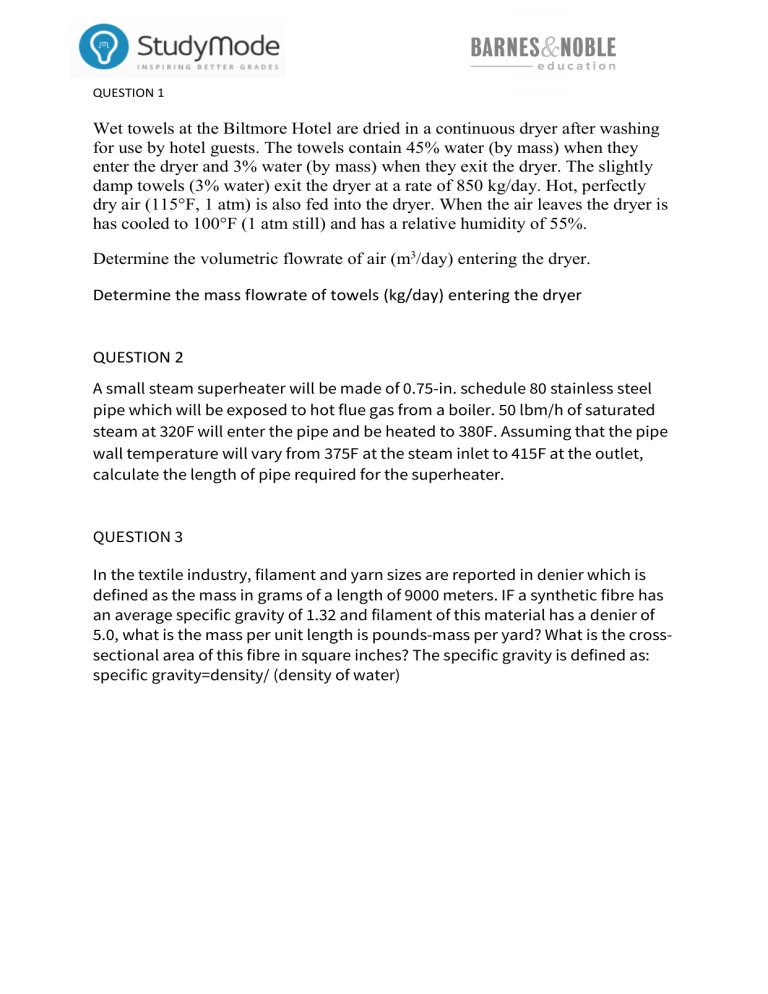
QUESTION 1 Wet towels at the Biltmore Hotel are dried in a continuous dryer after washing for use by hotel guests. The towels contain 45% water (by mass) when they enter the dryer and 3% water (by mass) when they exit the dryer. The slightly damp towels (3% water) exit the dryer at a rate of 850 kg/day. Hot, perfectly dry air (115°F, 1 atm) is also fed into the dryer. When the air leaves the dryer is has cooled to 100°F (1 atm still) and has a relative humidity of 55%. Determine the volumetric flowrate of air (m3/day) entering the dryer. Determine the mass flowrate of towels (kg/day) entering the dryer QUESTION 2 A small steam superheater will be made of 0.75-in. schedule 80 stainless steel pipe which will be exposed to hot flue gas from a boiler. 50 lbm/h of saturated steam at 320F will enter the pipe and be heated to 380F. Assuming that the pipe wall temperature will vary from 375F at the steam inlet to 415F at the outlet, calculate the length of pipe required for the superheater. QUESTION 3 In the textile industry, filament and yarn sizes are reported in denier which is defined as the mass in grams of a length of 9000 meters. IF a synthetic fibre has an average specific gravity of 1.32 and filament of this material has a denier of 5.0, what is the mass per unit length is pounds-mass per yard? What is the crosssectional area of this fibre in square inches? The specific gravity is defined as: specific gravity=density/ (density of water) QUESTION 4 A fireman is using high pressure stream of water from hose to combat raging forest fire. At one end the hose has inside diameter of d1= 5cm ad is connected to high pressure water reservoir at P1=300psi. At the other end is nozzle with diameter d2=3cm that is exposed to atmospheric pressure P2=1atm. To a good approximation, flowing water in this process can be modelled as having a constant temperature and constant mass density =1g/cc. Moreover, for an incompressible liquid, the following equation well describes isothermal enthalpy changes. h v. P Where v is volume per mole or molecule (depending on the basis of h) 1) How much faster is the velocity of exiting water at the nozzle than that of the entering stream at the reservoir? Express your answer as ratio. 2) If hose is well insulated, find the exit velocity of stream of water, in m/s 3) Find the exit volumetric flowrate of water, in gal/s QUESTION 5 Public concern about the increase in CO2 in the atmosphere has led to many proposals to eliminate CO2. A scientist has developed a new catalyst that makes the following reaction possible. CO2(g) +4 H2 (g) 2 H2O(v) + CH4(g) Hydrogen would be collected from hydrolysis of water using electricity generated from solar cells. A test of the process showed on the basis of 1 mole of CO2 (entering from a different process at 800K) reacting with 4 moles H2 entering 298K, only 70% conversion of CO2 occurred. The products exit from the reactor at 1000K. Calculate the heat transfer to or from the reactor (specify which). For the Cp values from, you may use just ‘a’ and ‘b’ terms for simplicity.
